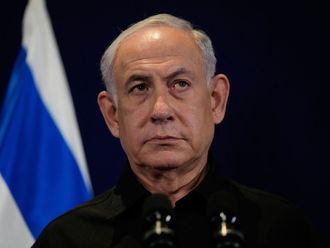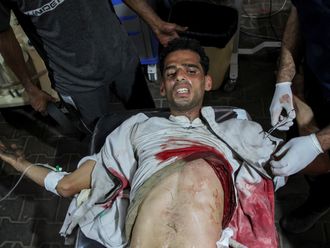Washington: For months now, the United States has been training secular Syrian fighters in Jordan with the goal of bolstering the array of forces battling President Bashar Al Assad’s regime while at the same time strengthening the hand of moderates among the country’s fractured opposition, American and foreign officials said. They said the effort is ongoing.
The training has been taking place since late last year at an unspecified location, concentrating largely on Sunnis and tribal Bedouins who formerly served as members of the Syrian army, officials said. The forces aren’t members of the leading rebel group, the Free Syrian Army, they said. The US and others fear the growing role of extremist militia groups in the rebel ranks, including some linked to Al Qaida.
Officials said the operation is being run by US intelligence. But those in Washington stressed that the US was only providing non-lethal aid at this point, stopping short of a step that is being increasingly advocated by lawmakers in Congress but which the Obama administration opposes.
Others such as Britain and France are involved, officials added, though it’s unclear whether any Western government is providing material or other direct military support after two years of civil war that, according to the United Nations, already has killed more than 70,000 people.
The officials spoke on condition of anonymity because they weren’t authorised to speak publicly about the programme.
Officially, the Obama administration has been vague on the subject of what type of military training it may be providing, while insisting that it is doing all it can — short of providing weapons to the rebels or engaging in its own military intervention — to hasten the demise of the Al Assad family’s four-decade dictatorship.
White House spokesman Josh Earnest said on Monday the US has “provided some logistical non-lethal support that has also come in handy for the Syrian rebels who are, again, fighting a regime that is not hesitating to use its military might against its own people.
Effect unclear
“That is something we’re going to continue to work to bring to an end,” he told reporters.
It’s unclear what effect the training has had in the conflict. It has become a quagmire, with Al Assad’s regime unable to snuff out the rebellion and Syria’s opposition incapable thus far of delivering any serious blow to the ruling government’s grip on Damascus and control over much of the country.
Some of the Syrians the US is involved with are in turn training other Syrians inside the country, officials said.
They declined to provide more information because they said that would go too deep into intelligence matters. Defence Department officials insisted the Pentagon isn’t involved with any military training or arms provisions to the Syrian rebels, either directly or indirectly. The CIA declined to comment.
The New York Times reported on Monday that the CIA helped Arab governments and Turkey sharply increase their military aid to Syria’s opposition in recent months, with secret airlifts of arms and equipment. It cited traffic data, officials in several countries and rebel commanders, and said the airlift began on a small scale a year ago but has expanded steadily to more than 160 military cargo flights by Jordanian, Saudi and Qatari planes landing at Turkish and Jordanian airports.
The training in Jordan, however, suggests the US help is aimed somewhat at enhancing the rebels’ capacity in southern Syria, the birthplace of the revolution two years ago when teenagers in the sleepy agricultural outpost of Dara’a scribbled graffiti on a wall and were tossed into jail, spurring Syria’s own version of an Arab Spring uprising. Much of the violence since, however, has been in the northern part of the country, where rebels have scored several military successes after the Al Assad regime cracked down brutally on peaceful protesters.
Despite months of US and international support to build a cohesive political movement, Syria’s fractured opposition is still struggling to rally Syrians behind a common post- Al Assad vision. And the opposition coalition appears as much hampered by its political infighting as its military deficiencies against an Al Assad regime arsenal of tanks, fighter jets and Scud missiles.












